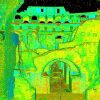
In 2021, archaeologists with the Parco Archeologico del Colosseo began using LiDAR (Light Detection and Ranging) and 3D scanning to create the most detailed map ever made of the hypogeum. Continue reading
Read more...
In 2021, archaeologists with the Parco Archeologico del Colosseo began using LiDAR (Light Detection and Ranging) and 3D scanning to create the most detailed map ever made of the hypogeum. Continue reading
Read more...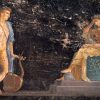
In the ancient city of Pompeii, preserved for centuries under volcanic ash, archaeologists have uncovered a series of vivid frescoes that offer a rare glimpse into the culinary world of the Romans. Discovered in 2023, these paintings – found in both humble street-side eateries and luxurious private homes – reveal fascinating details about what Romans… Continue reading
Read more...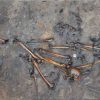
Around 2,000 years ago, a mixed group of around 400 Germanic tribesmen marched into battle against an unknown opponent. None of them survived. These are the findings of a recent archaelogical dig at Alke Enge – a peat bog nestled among the Illerup River Valley in Denmark – where nearly 2,100 bones belonging to dead… Continue reading
Read more...
There have been many stories borne out of the Great War that have seen families split apart, marriages broken and young soldiers lost for decades as conflict raged across Western Europe. But one story to emerge this week could contain the longest-ever wait for one British solider who has finally been laid to rest after… Continue reading
Read more...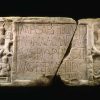
We are all familiar with the image of Roman sculptures, statues and remains being cast in bland greys or creams, their original colours worn away by centuries of damage or neglect. But one recent discovery by a researcher at the University of Glasgow has perfectly brought to light how even the ancient Romans used bright… Continue reading
Read more...
He’s remembered as one of the swaggering symbols of the Tudor period, a famous womaniser with six wives, desparate for a male heir and – of course – one of the most influential figures when it comes to the face of the globe’s religions today, after he broke away from the Catholic Church in what… Continue reading
Read more...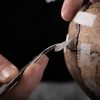
Swedish archaeologists have uncovered a site that sheds some light on how the Roman Empire may have started to crumble after discovering evidence of a massacre that took place some 1,500 years ago – completely with Roman jewellery and gold denarii. A team of archaelogists have been working at a site at Sandby Borg on… Continue reading
Read more...
The story of the lost Roman settlements of Pompeii and Herculaneum, located near the modern city of Naples, is one that has captured the imagination of historians and history students for centuries. Both towns were almost entirely destroyed in AD 79 when nearby Mount Vesuvius erupted, covering the surrounding area in tons of burning volcanic… Continue reading
Read more...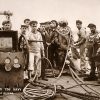
Code-breaking is one of the most evocative images we have of World War II, thanks to stories frequently retold about the deciphering of the Enigma code and other covert operations at Bletchley Park. Of the stories told about World War I, however, code-breaking does not feature so prominently. According to author Joseph A. Williams, however,… Continue reading
Read more...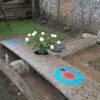
It can sometimes take a while for a fitting memorial to a historical event to be designed, made and put into the public eye. They might not even get past the drawing board, if there are enough delays or even a cancellation thanks to “death by committee”. Others should never really been made real, such… Continue reading
Read more...